A ONCE-MISUNDERSTOOD GIVING TOOL IS PROVING ITS VALUE
ANOTHER TOOL FOR CRISIS RESPONSE
Donors are investing resources to address today’s most pressing challenges. Donor Advised Funds are another tool in donors’ philanthropic toolbox. Donors investing in DAFs get immediate tax relief along with opportunity to deploy their money into the community now, or later. Contributions from DAFs can complement outright gifts, legacy gifts and individual and family foundation contributions to optimize donors’ levels of giving and community investment and impact.
The secret has been out on Donor Advised Funds for some time now. Once a misunderstood niche giving vehicle, DAFs have been growing at an astonishing rate over the last decade, by as much as three times the overall growth in giving, according to the Giving USA Foundation. The appeal is obvious — the model allows donors to centralize and simplify their giving, easily transfer non-cash assets and optimize their tax benefits, all while delaying a final decision on which causes and organizations to support.
Despite these benefits, many nonprofit professionals are still leery about the long-term impacts of DAFs on philanthropy. Donor Advised Funds are not subject to the same annual disbursement requirements that private foundations must contend with, leading some to charge that the funds are often “parked” for tax benefits, not actually reaching the nonprofits in a timely manner. Furthermore, fundraisers, who often receive their checks from the sponsoring organizations housing the DAF, lament the lack of donor interaction and, therefore, the opportunity to build personal relationships with the donors themselves.
Recently, however, the vehicle has proven strikingly resilient, demonstrating its adaptability and usefulness as a valuable giving tool for individual donors. Fears that the COVID-19 crisis would negatively impact giving levels have been at least partially assuaged by the explosion in giving from Donor Advised Funds. Fidelity Charitable, Schwab Charitable and Vanguard Charitable have all reported significant increases in disbursements in Q1. Fidelity Charitable, in particular, reported an astonishing $3.8 billion was disbursed from its DAF accounts. Furthermore, an astonishing 79 percent of account holders who gave more than $1,000 stated that they planned to either increase or maintain their giving levels over the coming year.
This flood of funds both into and out of Donor Advised Funds speaks to the model’s suitability to contend with the challenges and opportunities of modern philanthropy. As traditional workplace giving programs continue to decline and impact is increasingly prioritized over institutional and geographic loyalty, Donor Advised Funds offer a straightforward and efficient way for donors to grapple with a progressively complex and sophisticated philanthropic environment.
And despite the very valid concerns of many nonprofit professionals about the impact of DAFs, the reality is that they are here to stay — and their value and utility to donors should be embraced. Nonprofit professionals need to be fully informed about, trained on and equipped to leverage Donor Advised Funds — only then will they be able to advise and counsel their donors to optimize their giving. With that in mind, there is much that nonprofit executives, fundraising staff and volunteer leaders can do to better prepare their organizations.
Get educated. Donors expect nonprofit leaders and fundraising professionals to be fully knowledgeable about one of the most prominent giving tools in use today. Organizations should ensure that they are ready to engage with their donors about all their giving options by implementing training and education sessions on Donor Advised Funds and other complex giving tools for executive leaders, development officers and board members.
Invest in data analytics technologies and techniques. Education and training on DAFs must be accompanied by an enhancement of the organization’s fundraising infrastructure. Being knowledgeable about Donor Advised Funds and other giving tools will help to engage a potential donor, but identifying, tracking and stewarding those donors requires a data tracking and analysis capacity that will allow nonprofits to track where their DAF contributions are coming from, how donors behave and what donors respond to. This means a greater investment in data analytics technologies and techniques.
Remember, commercial funds are not the only game in town. Though Fidelity, Schwab, and Vanguard are giants in the world of Donor Advised Funds, community foundations, hospitals, universities and United Way chapters are becoming increasingly active and significant players. Donors who choose to forego the commercial giants in favor of these organizations are often more locally focused and much easier to identify and engage with. Furthermore, the philanthropic advisors at community foundations (who often play a crucial role in helping donors decide where to contribute) are usually open to learning about the stellar programs and impact of local organizations. Building relationships with local DAF sponsors should be a top priority for nonprofit professionals and volunteer leaders.
The unprecedented political, social, and economic upheaval of 2020 makes any predictions about the future of philanthropy difficult at best. Regardless, Donor Advised Funds have proven to be a valuable and adaptable giving tool — and one that can help both nonprofits and their donors to diversify philanthropic revenue and sustain in times of crisis and uncertainty. The time has come to truly embrace them.
The most complete and comprehensive information on Donor-Advised Funds is Giving USA’s Special Report “The Data on Donor- Advised Funds,” which is available for purchase. store.givingusa.org
Richard Tollefson is founder and president, and Michal Tyra is director of Client and Community Engagement at The Phoenix Philanthropy Group, an Arizona-based international consulting firm serving nonprofit organizations as well as institutional and individual philanthropists. phoenixphilanthropy.com
